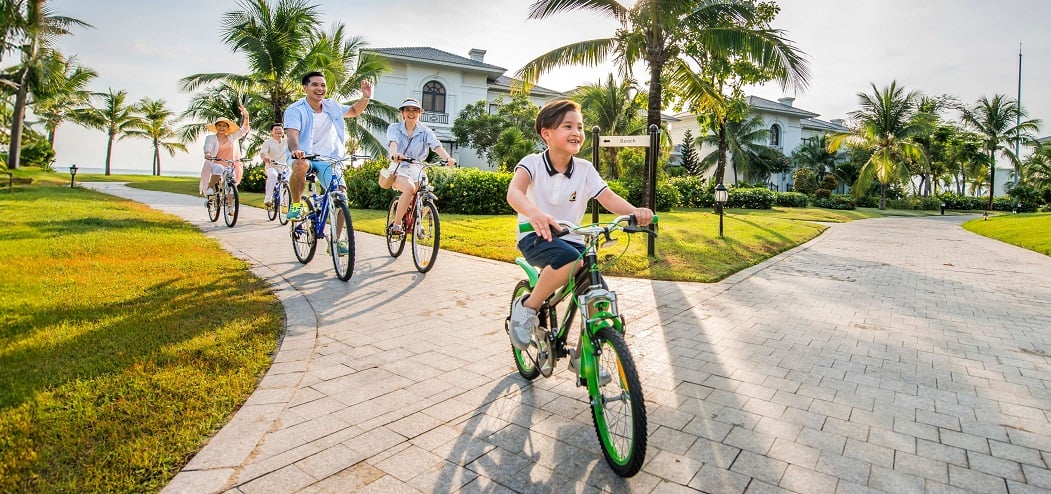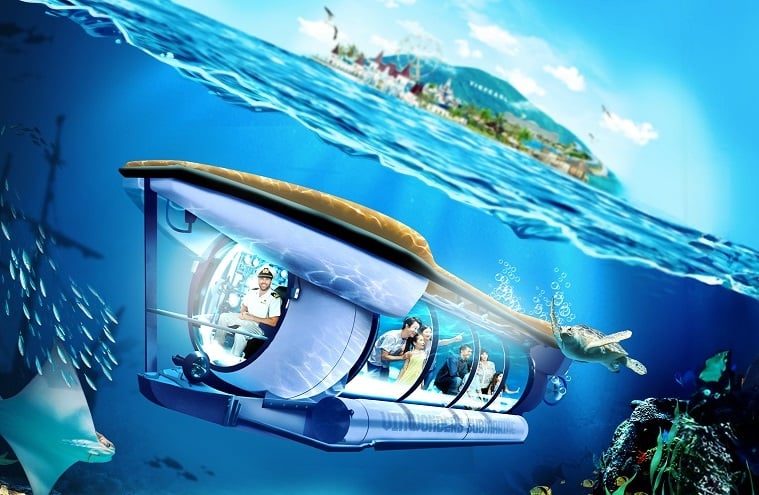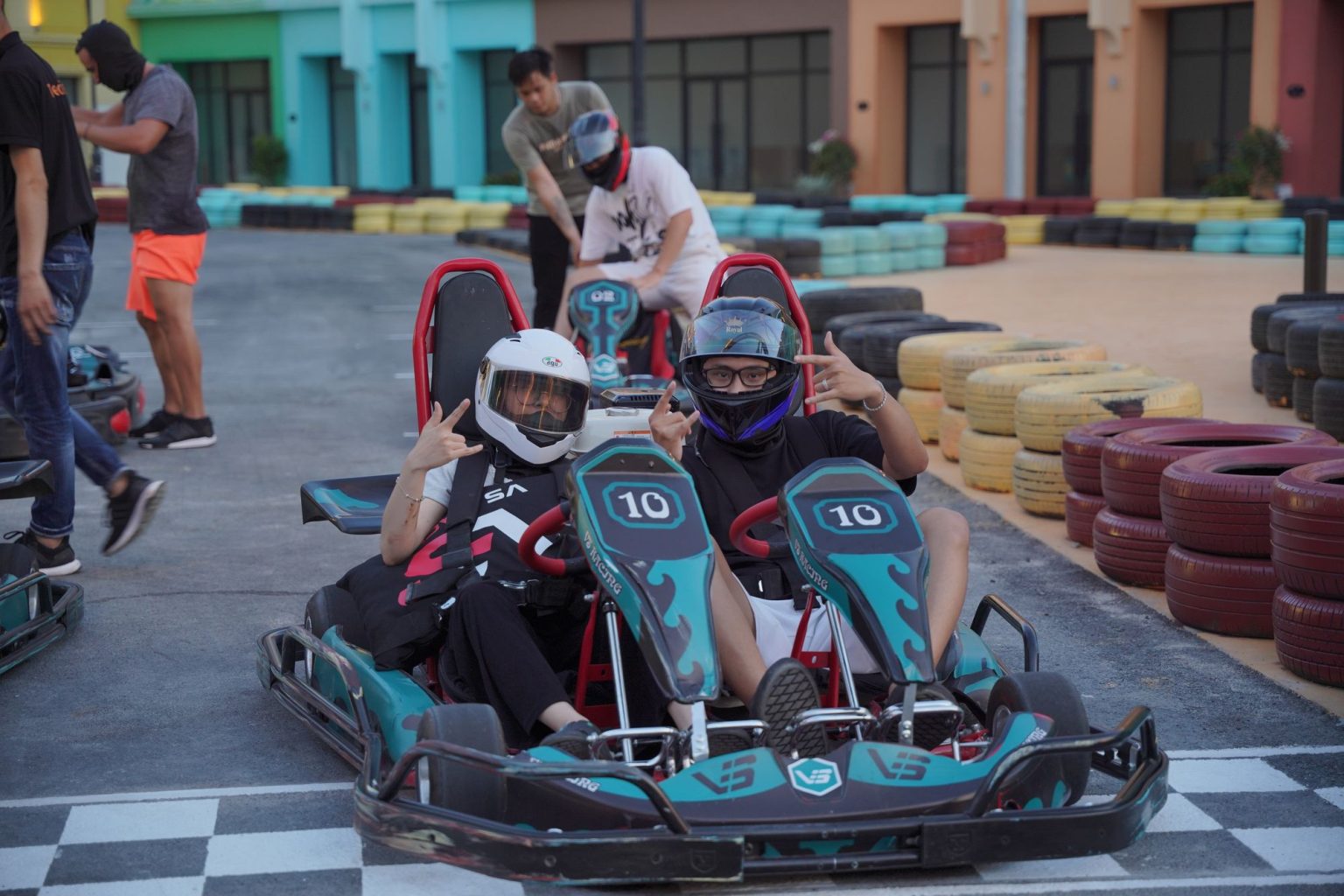
Coming to Vietnam, alongside the majestic beauty, Vietnam food tourism is something that cannot be overlooked due to the diversity of Vietnamese foods. Have you ever found yourself captivated by the aromatic allure of Vietnamese street food, yet don’t know its names? This article explores the nuances that make up the names of food in Vietnamese.
1. Insights into Vietnamese food culture
Vietnamese cuisine is an essential aspect of Vietnamese culture that is praised and highly regarded worldwide. With diverse ingredients, refined cooking processes, and distinct regional touches, Vietnamese cuisine offers unique flavors that leave a lasting impression.
With a coastline stretching over 3,000 kilometers, a varied landscape of plains, hills, and mountains, and a rich cultural life of 54 ethnic groups, Vietnam provides favorable conditions for producing abundant and fresh ingredients. While many Vietnamese dishes are often prepared with simplicity, some require sophistication and patience, all of which emphasize the use of vegetables, fruits, and roots with a moderate amount of meat and oil to maintain a light and easily digestible diet.
When talking about Vietnamese cuisine, it is impossible not to mention the signature nectar of the sea. Fish sauce, a crucial component, is commonly used for seasoning and is combined with an array of natural spices to produce deep flavors and distinctive aromas.
Vietnamese dishes usually appear rustic, but they can be intricate and skillfully made. The tasty flavors of Vietnamese food come from how it is cooked - boiled, steamed, grilled, and more - and from the spices used. Each dish is typically accompanied by a specific dipping sauce, contributing to the unmixable taste.

Throughout Vietnam, you will find regional differences in the foods. Up North, naturally sweet and moderate use of spices prevail with dishes like pho, bun cha, and banh cuon. In the central region, the food is more spicy and bold, evident in dishes like bun bo Hue and sup luon (eel soup). Down South, the food is simple and rustic and usually quite sweet, with dishes like com tam (broken rice with grilled ribs) and various kinds of salads.
So, when you're in Vietnam, don't hesitate to experience Vietnamese food tourism, a way to learn about Vietnam’s culture through food. It is a heavenly gastronomic journey that you won't forget. Now, dive into the names of foods in Vietnamese as well as useful words and phrases for ordering dishes when traveling in Vietnam.
2. Names of famous Vietnamese foods in Vietnamese language
Let’s unravel the cultural and culinary richness of Vietnam through the distinctive names of the most iconic dishes in the Vietnamese language.
2.1. Names of noodle dishes in Vietnamese
In the diverse world of Vietnamese noodles, each bowl tells a distinct story of regional flavors and culinary creativity. Learn about the names of these Vietnamese foods in Vietnamese.
English name | Vietnamese name | Description and variations |
Vietnamese pho | Phở | Flat and rectangular rice noodles, popular in Northern Vietnam, often served in a delicate soup with beef (phở bò) or chicken (phở gà). |
Glass noodles | Miến | Thin and cylindrical glass noodles used in soups like chicken glass noodle soup (miến gà) or noodle salads such as eel glass noodle salad (miến lươn trộn). |
Quang Nam regional noodles (Quang noodles) | Mì Quảng | Mi Quang - wide, flat rice noodles with nutty broth, sliced pork, shrimp, lettuce, quail eggs, and sesame rice crackers, unique to Central Vietnam. |
Red rice noodles | Bánh đa đỏ | Thin, flexible, and chewy noodles with a distinct brown color from caramel and sweet gourd powder, commonly enjoyed with crab (bánh đa cua) or fish (bánh đa cá) in Northern Vietnam. |
Thick tapioca noodles | Bánh canh | Thick tapioca noodles served in various broths, with versions including pork knuckles, sausage, crab, or freshwater fish in the Mekong Delta. |
Hoi An noodles | Cao lầu | Udon-like noodles dipped in mineral-rich water from a local well, topped with roasted pork slices and leafy greens, unique to Hoi An. |
Rice vermicelli with fried tofu and shrimp paste | Bún đậu mắm tôm | Rice vermicelli noodles served with fried tofu and fermented shrimp paste, offering a mix of textures and flavors with fresh green herbs. The Vietnamese call this dish bun dau mam tom. |
Fermented fish noodle soup | Bún mắm | Rice vermicelli noodles in fermented fish-flavored broth, featuring squid, shrimp, catfish, eggplant, fish cakes, and roasted pork belly, originate from Soc Trang Province. |
Grilled pork and rice vermicelli | Bún thịt nướng | Marinated grilled pork served with rice vermicelli noodles, fresh vegetables, and herbs, combined with fish sauce enriched with lime or lemon juice. |
Hanoi rice vermicelli noodles with chicken and eggs | Bún thang | Bun thang features rice vermicelli, chicken-based broth, and assorted toppings like shredded chicken, gio lua (steamed pork loaf), egg strips, shrimp floss, and herbs. |
Grilled pork meatballs with vermicelli | Bún chả | Grilled pork meatballs in a hot or cold fish sauce broth, served with rice noodles and fresh greens, offer a unique taste from Hanoi. |
Hue beef noodle soup | Bún bò Huế | Bun bo Hue noodles - a spicy noodle soup featuring thick rice vermicelli, beef, or pork slices, topped with leaves and herbs. |
Stir-fried noodles | Mì xào | Stir-fried noodles feature the freshest vegetables sautéed with onions, meat, or seafood. This flavorful Vietnamese egg noodle dish is garnished with coriander leaves and served alongside chili-infused soy sauce. |
Crispy fried pho | Phở chiên phồng | Pho noodles are deep-fried into crispy squares and adorned with a delectable topping of cooked tomatoes, choy sum, beef, and savory gravy. |

2.2. Names of rice dishes in Vietnamese
Vietnamese rice dishes are fragrant grains that undergo different delightful transformations. From the smoky notes of clay pot rice to the aromatic coconut-infused goodness of com dua, learn more about how to order food in Vietnamese.
English name | Vietnamese name | Description and variations |
Clay pot rice | Cơm niêu | A rice dish cooked in a clay pot over an open flame, featuring marinated meat, vegetables, and various spices. |
Fried rice | Cơm chiên | Vietnamese fried rice is often made with leftover rice, vegetables, meat, and seafood, seasoned with soy sauce and spices. |
Coconut rice | Cơm dừa | Fragrant rice cooked with coconut milk and pandan leaves, offering a creamy texture and delightful aroma. |
Vietnamese broken rice | Cơm tấm | Broken rice served with grilled pork chops, shredded pork rinds, steamed egg, scallion oil, and fish sauce. |
Hell rice | Cơm âm phủ | Hell rice, representing Hue's culinary art, features boiled pork, Hue-style sausage, fried eggs, shrimp, fermented pork rolls, pickled vegetables, tomatoes, and herbs served with premium-quality rice. |
Bamboo rice | Cơm lam | Rice dish cooked inside bamboo tubes, absorbing the bamboo's fragrance for a unique aroma and flavor. |
Ni rice | Cơm ni | Originating from An Giang Province, “cơm ni” combines rice, milk, and raisins for a delightful blend of flavors, often served alongside beef. |
Hoi An chicken rice | Cơm gà Hội An | Hoi An chicken rice features tender poached chicken served on fragrant rice cooked in chicken broth and turmeric, accompanied by herbs. |
Ninh Binh rice crust | Cơm cháy Ninh Bình | This dish boasts a crispy crust with stir-fried pork, mushrooms, and herbs, offering a delightful combination of textures and flavors. |
Clam rice | Cơm hến | The flavorful Vietnamese clam rice consists of baby clams, herbs, peanuts, crispy pork rinds, and fresh vegetables. |
Vietnamese sticky rice | Xôi | Vietnamese sticky rice is a versatile dish made from glutinous rice, served in diverse sweet and savory variations with different flavors. |
Crab rice | Cơm ghẹ | Crab rice, cooked with crab broth, features fragrant rice, succulent crab meat, and aromatic spices. |

2.3. Names of Vietnamese rolls in Vietnamese
Vietnam has various different Vietnamese rolls, where delicate rice paper wraps are the main ingredients. Explore all the diverse offerings that make Vietnamese rolls a beloved part of the culinary landscape and how to call these foods in Vietnamese.
English name | Vietnamese name | Description and variations |
Pho rolls | Phở cuốn | Rice noodles made from rice flour and cornstarch, rolled with beef, lettuce, bean sprouts, and different kinds of vegetables. Pho rolls are a beloved quick dish in Vietnam. |
Steamed rice rolls | Bánh cuốn | Vietnamese steamed rice rolls are filled with various ingredients, depending on the specific region. Hanoi's version includes ground pork and mushrooms, while Cao Bang locals add egg and bone broth. |
Fried spring rolls | Chả giò / Nem rán | Vietnamese spring rolls with a pork and shrimp filling, added with fresh vegetables, wrapped in rice paper, and fried for a crispy texture. |
Summer rolls | Gỏi cuốn | Vietnamese summer rolls with rice paper filled with meat or seafood, rice vermicelli, and fresh herbs. |
Fermented pork rolls | Nem chua | Fermented pork rolls with a sweet, sour, salty, and spicy taste are often enjoyed as a snack. |

2.4. Vietnamese names of Vietnamese cakes
The sweet and savory delights of Vietnamese cakes reflect the rich cultural heritage of Vietnam. Below are some of the most famous ones and the names for these foods in Vietnamese.
English name | Vietnamese name | Description and variations |
Honeycomb cake | Bánh bò | Vietnamese honeycomb cake - a sponge-like cake made with coconut milk, offers a distinct sweet and rich aroma. |
Cassava cake | Bánh khoai mì | Vietnamese cassava cake, made from cassava, coconut water, sugar, and salt, is known for its rustic and comforting essence. |
Mung bean cake | Bánh đậu xanh | Vietnamese mung bean cake is made from mung beans, sugar, fat, grapefruit flower essential oil, and coconut oil. |
Vietnamese husband and wife cake | Bánh xu xê | Xu xe cake is a symbolic wedding dessert made with green beans, coconut, tapioca flour, water, and roasted sesame. |
Vietnamese ramie leaf cake | Bánh gai | This cake features ramie leaves, green beans, sticky rice, and a meticulous preparation process. Recognizable by its black color, the cake offers a delightful blend of sweetness, richness, and a flexible texture. |
Vietnamese steamed layer cake | Bánh da lợn | Also known as pig skin or nine-tiered cloud, this cake is a special dessert with tapioca flour, green beans, and white sugar. The smooth-textured cake, often enhanced with taro or durian, boasts multiple layers, earning its creative names. |
Vietnamese green sticky rice cake | Bánh cốm | Banh com stands out with its chewy texture and signature ingredients: fragrant green rice, sweet mung bean paste, and delicate coconut strands. |
Vietnamese pancakes | Bánh xèo | Vietnamese pancakes are made with various fillings like pork, shrimp, bean sprouts, and come in many regional versions. |
Vietnamese deep-fried cake | Bánh rán | With sweet variations coated in sesame, honey, and sugar and savory ones filled with meat and wood ear mushrooms, banh ran is a familiar treat for locals, complemented by a sweet and sour dipping sauce. |
Tapioca cake | Bánh bột lọc | Tapioca cake made from cassava flour, filled with shrimp and meat mixture, steamed to perfection. |
Water fern rice cake | Bánh bèo | Steamed rice flour cakes, served with various toppings and dipping sauces, are a delicacy in the South. |
Square sticky rice cake | Bánh chưng | Chung cake features a blend of sticky rice, pork belly, mung beans, shallots, and pepper wrapped in Dong leaves. The result is a harmonious mix of savory pork, sweet mung beans, and satisfying sticky rice texture. |
Cylindrical sticky rice cake | Bánh tét | Banh tet is a southern Vietnamese specialty, shaped like a long cylinder wrapped in banana leaves. It offers a delectable blend of sticky glutinous rice, coconut milk, and various ingredients. |

2.5. Vegetarian foods in Vietnamese language
The term vegetarian food in Vietnamese is referred to as "món chay", which excludes the use of seafood or meat of animal origin in its preparation. When naming these dishes, diners simply need to add the word "chay" after the name of the food in Vietnamese, as exemplified below:
- Vegetarian pho (Phở chay)
- Vegetarian vermicelli (Bún chay)
- Vegetarian spring rolls (Nem rán/ Chả giò chay)
- Vegetarian hotpot (Lẩu chay)
- Vegetarian rice (Cơm chay)
- Vegetarian sticky rice (Xôi chay)
- Vegetarian banh mi (Bánh mì chay)

3. How to order food in Vietnamese?
When navigating menus with all the Vietnamese food in Vietnamese, ordering becomes an enjoyable experience with just a few handy phrases.
- If you are uncertain about the Vietnamese name, you can point at the dish on the menu and say:
"Cho + your pronoun + quantity + cái này"
- For instance: "Cho em 1 cái này” (This one, please!)
- In case you know the Vietnamese name, impress the locals by saying:
"Cho + your pronoun + quantity + measure word + food"
- For example: "Cho em 1 tô phở" (1 bowl of pho, please!)
- To be polite and friendly, add "pronoun + ơi" after the request.
- For example:
- "em ơi" (when talking to a younger person)
- "anh ơi" (when talking to an older male)
- "chị ơi" (when talking to an older female)
- For example:

4. Common ways to say thank you for the food in Vietnamese
Expressing gratitude for food in Vietnamese enhances your dining experience. While the word "cảm ơn" (thank you) suffices, a nuanced approach adds extra courtesy.
- You can include personal pronouns after "cảm ơn," tailored to the person's age and gender. For example, "Cảm ơn anh" for someone older who could be an older brother.
- Incorporating polite articles like "Dạ" at the beginning or "ạ" at the end of sentences adds respect, especially when interacting with seniors. For instance, "Dạ cám ơn" or "Cám ơn anh/chị ạ" are some common Vietnamese phrases.

What are you waiting for? Let’s embark on a culinary adventure through Vietnam travel. Discover the vibrant tapestry of Vietnam's rich culinary and cultural heritage as you journey through iconic cities like Hanoi, Ho Chi Minh City, Phu Quoc, Nha Trang, Hoi An, and Ha Long. These are all the top destinations in Vietnam, each possessing its own unique charm, cultural tapestry, and breathtaking landscapes.
For an exquisite retreat, indulge in the luxury and hospitality of Vinpearl's hotel and resort chain. Vinpearl's hotels and resorts boast a range of world-class amenities, ensuring a pampering stay. From plush accommodations to rejuvenating spas, fine-dining restaurants, and attentive service, every aspect is designed to elevate your travel experience.
Additionally, consider adding extra thrill to your trip with a visit to VinWonders, a system of entertainment complexes that promises fun and excitement for the entire family.


>>> Book rooms in Vinpearl Phu Quoc, Vinpearl Nha Trang, Vinpearl Resort & Golf Nam Hoi An, Vinpearl Resort & Spa Ha Long for an unforgettable experience in Vietnam!
The names of food in Vietnamese are keys unlocking doors to a rich cultural tapestry of Vietnam. When you learn how to read menus and order food in Vietnam, it's like starting an exciting journey. Each food name is like a chapter in a book, showing you different parts of Vietnam – its history, diverse landscapes, and family stories. So, don't wait, embark on your trip to Vietnam now to uncover this beautiful country’s wonders!
























